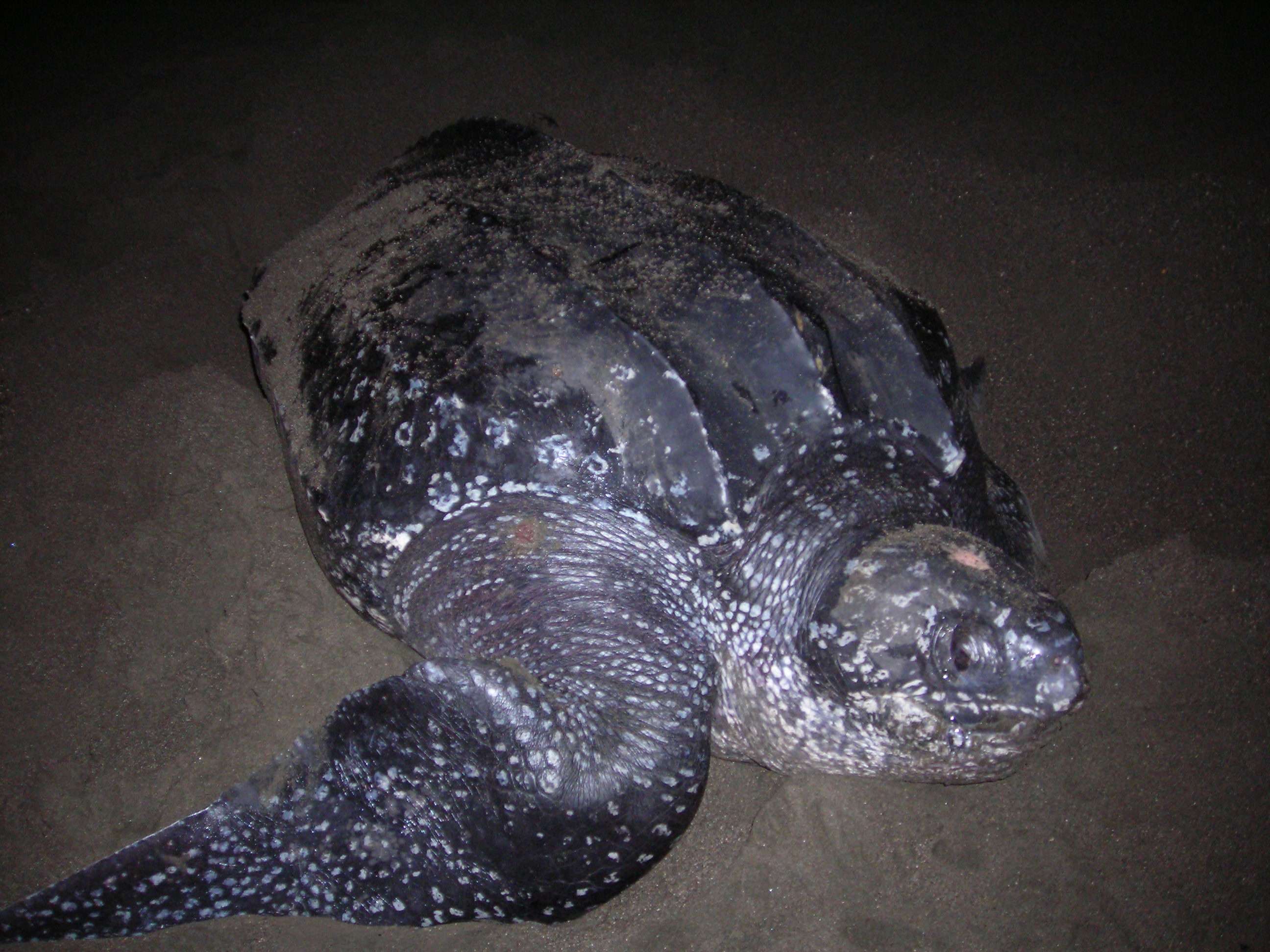
by Deasy Lontoh, Vertebrate Ecology Lab
It usually takes me 17 to 20 hours to fly from San Francisco to Jakarta, Indonesia, which covers about 9,000 miles of distance. Most of my family members live in Indonesia and I come to visit them every few years. Long hours in a plane seat and missing a day because of a 15-hour time difference are not my favorite things. But my journey is comparatively fast and plush. In 2007, I learned that a leatherback completed a similar trans-Pacific journey in 647 days covering 12,477 miles! On flippers! Scientists put on a satellite transmitter to track this turtle when it was nesting in Papua, Indonesia, which is about 2000 miles northeast of Jakarta. It traveled all the way from Indonesia to Oregon to feed on abundant jellies.
We know now that the leatherback turtles that feed all along the west coast of North America, including Monterey bay, CA in late summer and early fall, come all the way from the nesting population in Papua. Their satellite tracks show that these leatherbacks spend one season to forage on our west coast, spend the winter in Hawaii (probably because the water here is too cold), then come back to our west coast and eat more jellies. The body of a jelly consists of mostly water, although their gonads are a richer source of nutrients. Can you imagine how many jellies they need to eat? They have to eat enough jellies to fuel their return migration to the nesting beach in Indonesia and to produce eggs. Scientists predict they can their weight in jellies per day to get that much energy – about 800 pounds!
To learn more about the leatherback visitors to Monterey Bay, check out Scott Benson’s great blog through the TOPP project.


